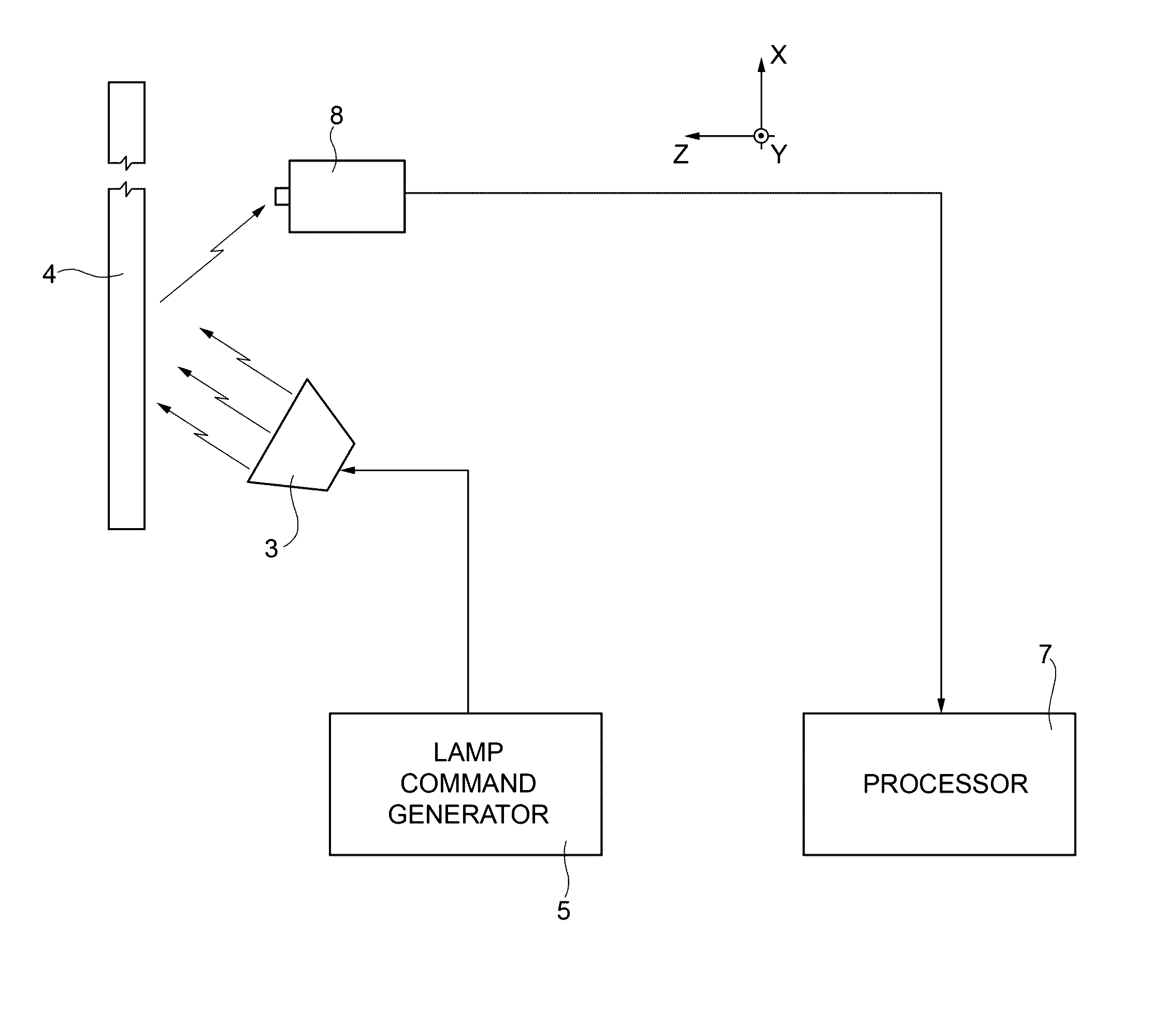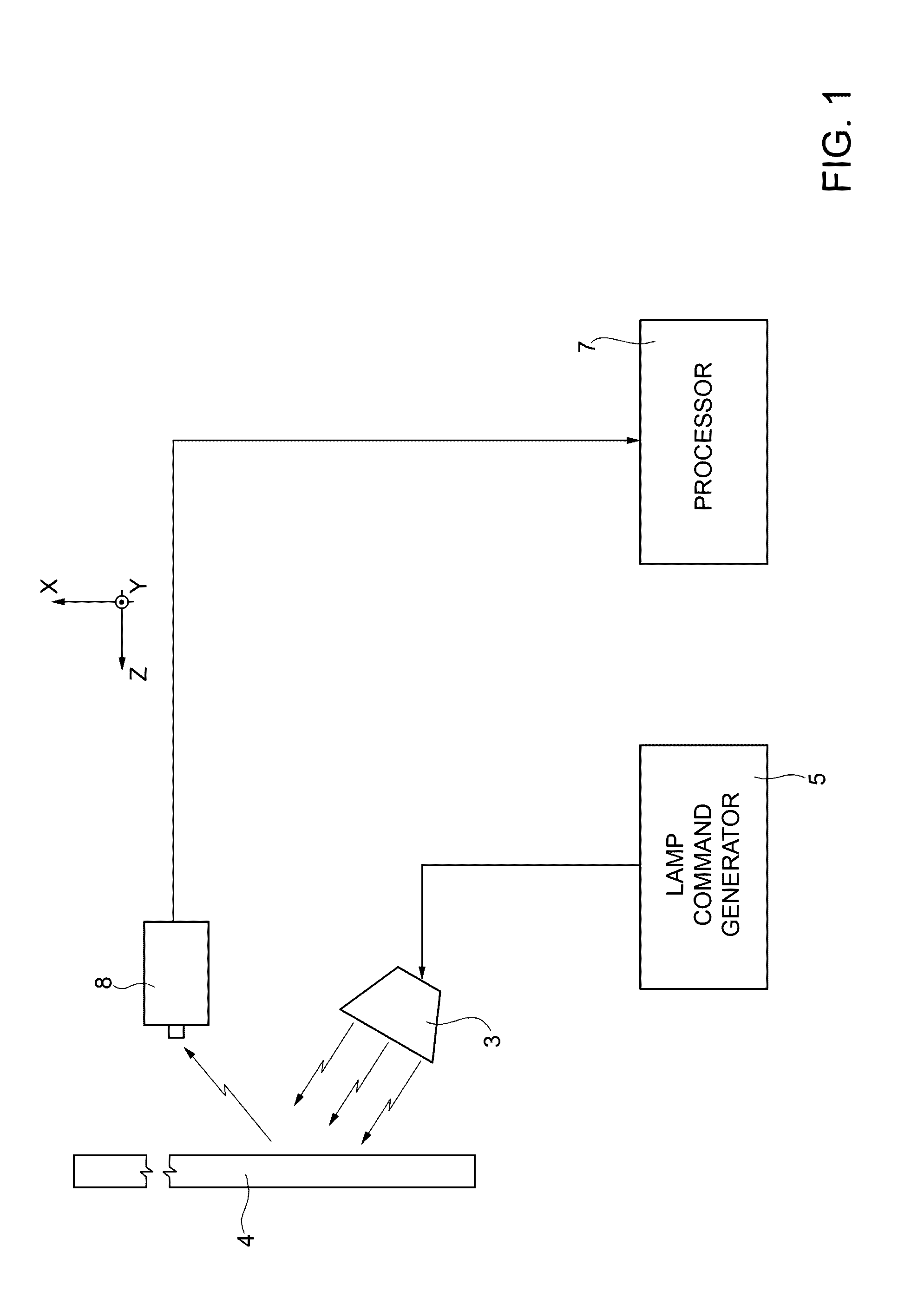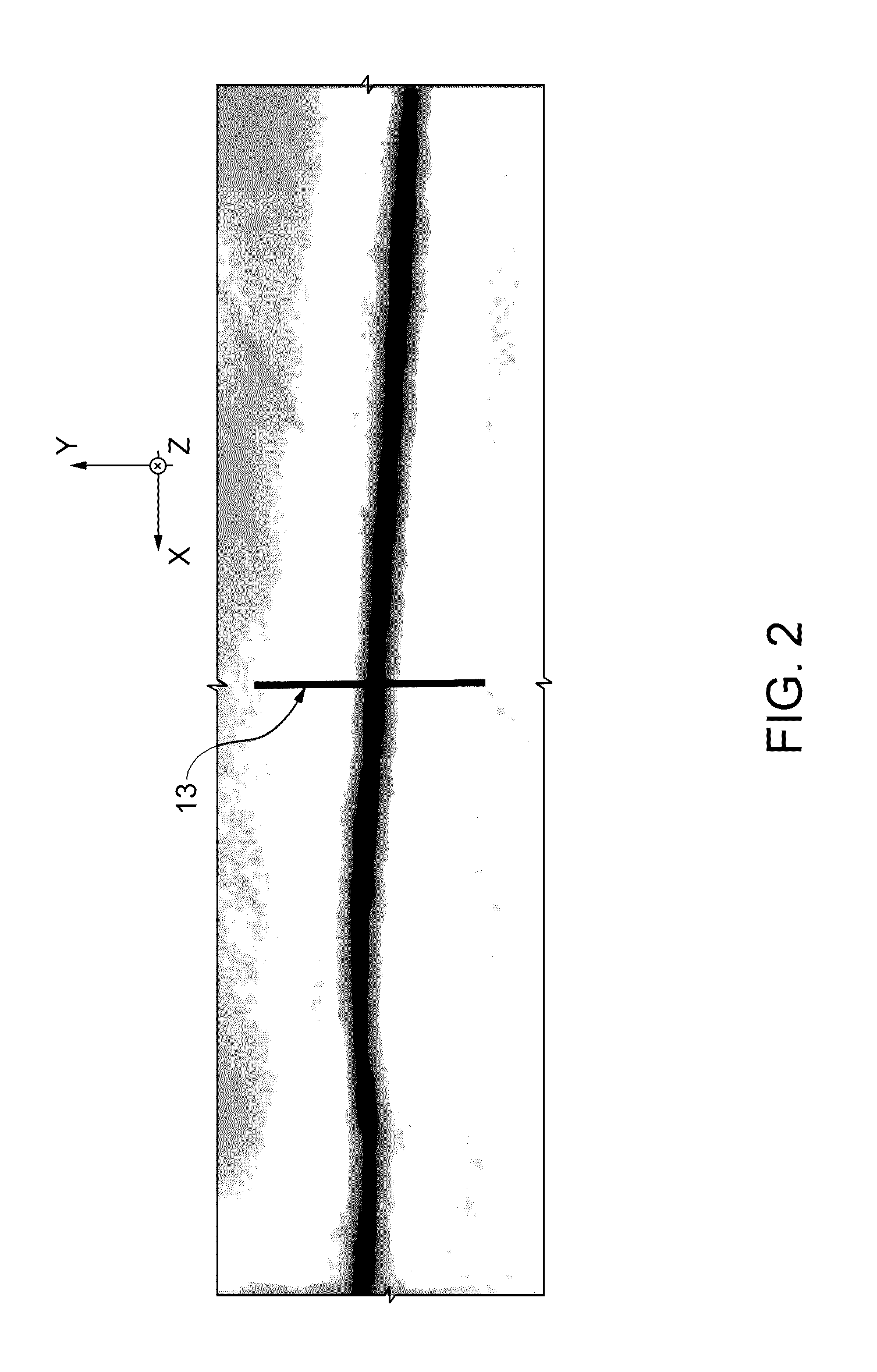Method and system of thermographic non-destructive inspection for detecting and measuring volumetric defects in composite material structures
a non-destructive inspection and composite material technology, applied in the direction of structural/machine measurement, radiation pyrometry, instruments, etc., can solve the problems of local lack of uniformity, prejudice the result of inspection, and traditional thermography is affected by some limits
- Summary
- Abstract
- Description
- Claims
- Application Information
AI Technical Summary
Benefits of technology
Problems solved by technology
Method used
Image
Examples
Embodiment Construction
[0027]La present invention relates to the technical field of thermographic non-destructive inspection of a composite material structure, defined between a top surface and a bottom surface, to detect and measure at least a volumetric defect that extends from the top surface towards the bottom surface without necessarily reaching it. The above-mentioned volumetric defect is also known as a “resin pocket”, and has a significant spatial extension in three dimensions defined by Cartesian axes X (length), Y (width) and Z (depth).
[0028]In this context, width and length identify the dimensions of the defect that extend along directions Y and X, respectively, these directions being mutually orthogonal but lying parallel to the incidence surface (KY plane) of the modulated thermal wave emitted by the halogen lamp(s) 3 onto the item 4 (see FIG. 1). The width along Y of the defect has a value less than the length along X. Instead, the depth of the defect along Z identifies an extension of the d...
PUM
| Property | Measurement | Unit |
|---|---|---|
| distance | aaaaa | aaaaa |
| temperature | aaaaa | aaaaa |
| dimension | aaaaa | aaaaa |
Abstract
Description
Claims
Application Information
 Login to View More
Login to View More - R&D
- Intellectual Property
- Life Sciences
- Materials
- Tech Scout
- Unparalleled Data Quality
- Higher Quality Content
- 60% Fewer Hallucinations
Browse by: Latest US Patents, China's latest patents, Technical Efficacy Thesaurus, Application Domain, Technology Topic, Popular Technical Reports.
© 2025 PatSnap. All rights reserved.Legal|Privacy policy|Modern Slavery Act Transparency Statement|Sitemap|About US| Contact US: help@patsnap.com



